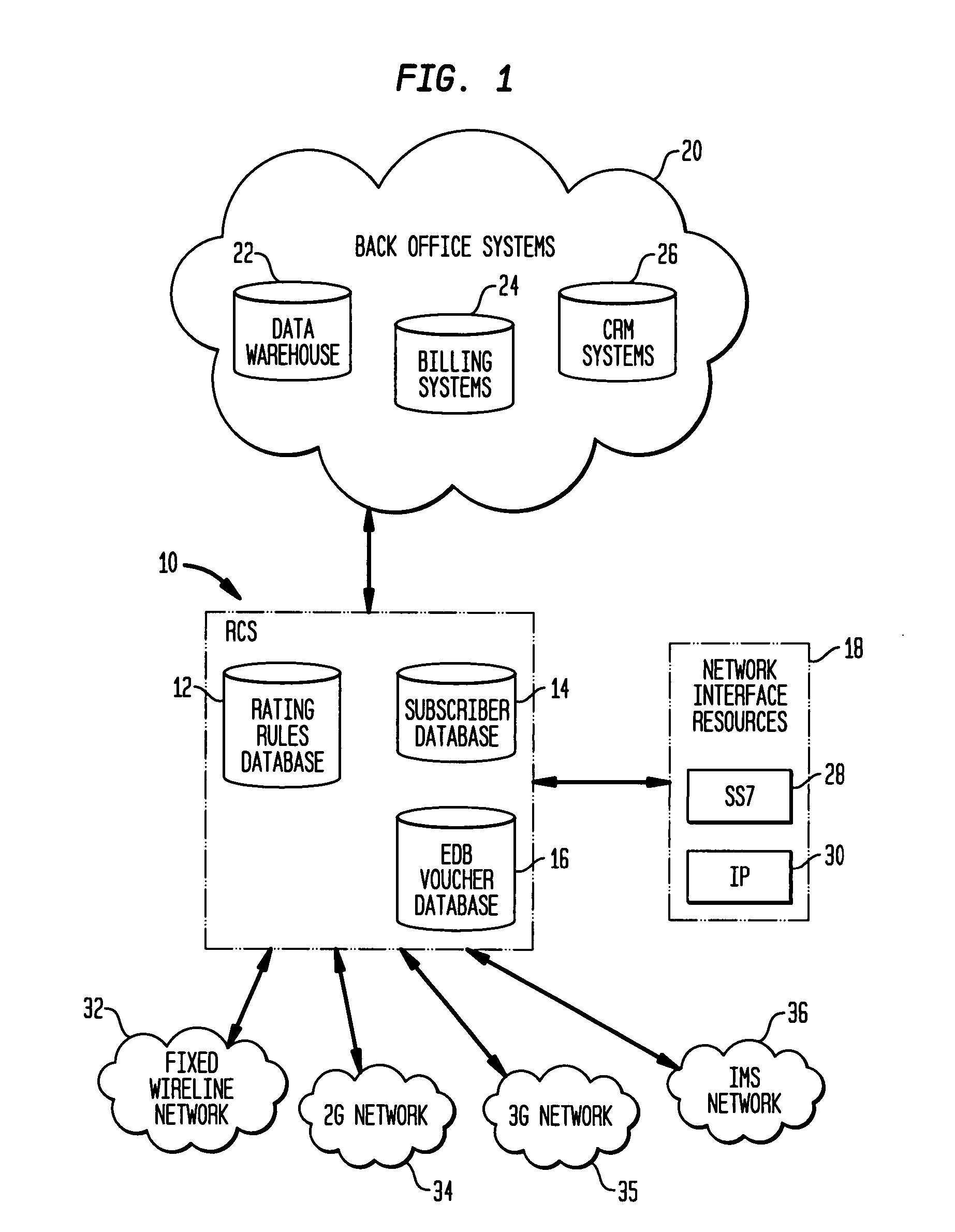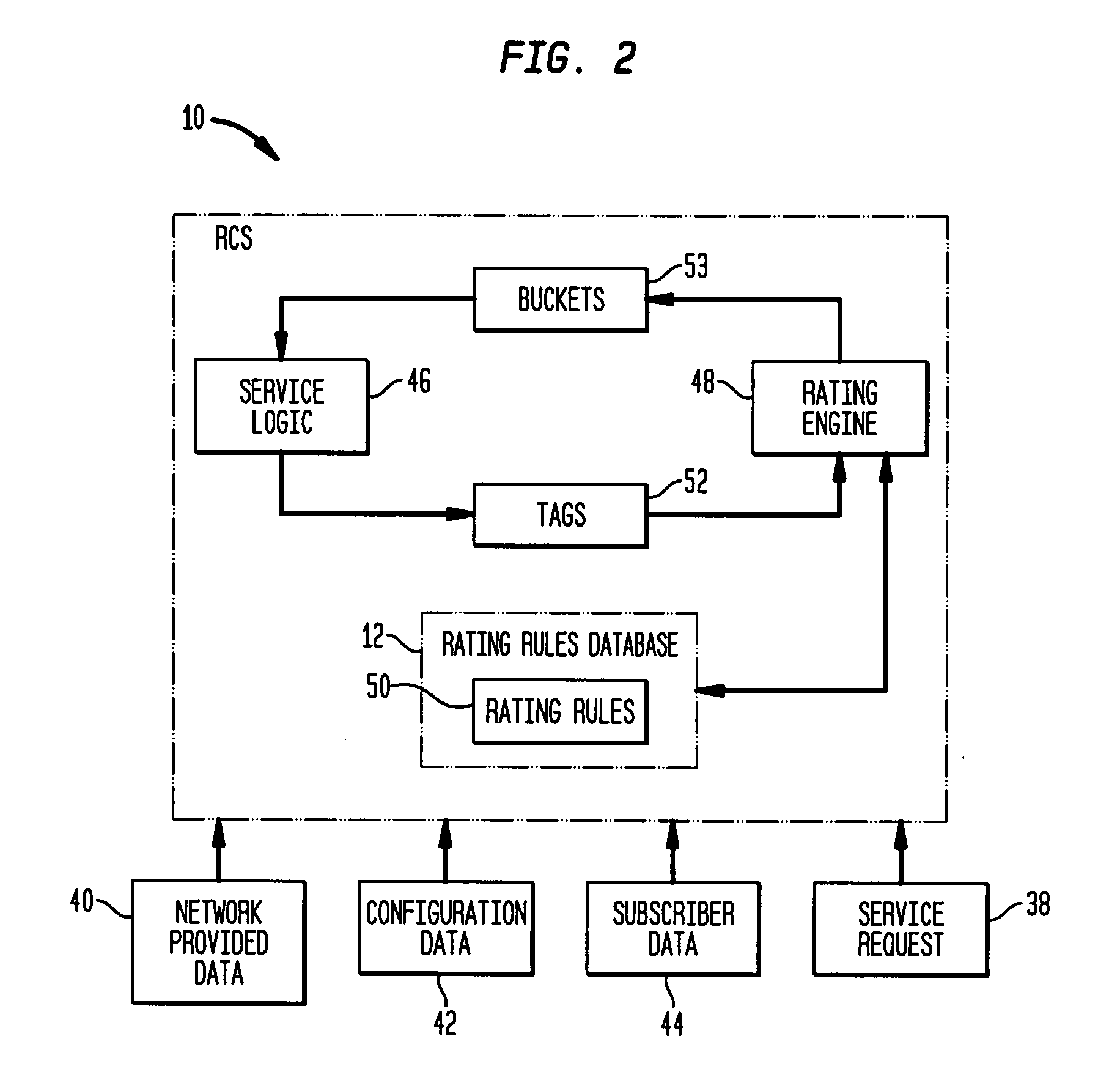Flexible rating rules and calender rules implemented in a real-time charging system for a telecommunications network
a real-time charging and flexible technology, applied in the field of wireless and wireline telecommunications networks, can solve the problems of insufficient solution for today's fast changing business needs, rule language restrictions, and significant competition between telecommunication network operators providing telecommunication services such as wireless voice and data services
- Summary
- Abstract
- Description
- Claims
- Application Information
AI Technical Summary
Benefits of technology
Problems solved by technology
Method used
Image
Examples
Embodiment Construction
[0022] Referring to FIG. 1, a real-time charging system (RCS) 10 is a set of computer software and databases implemented on one or more general purpose computers. RCS 10 comprises a set of rating rules 12, a customer database 14, an EDB voucher database 16 and network interface resources 18 in addition to service logic 46 and a rating engine 48 depicted in FIG. 2 and discussed further below. RCS 10 can be implemented as part of a Converged Application Server (CAS) or Service Control Point (SCP), both of which are known in the industry.
[0023] Rating rules database 12 comprises the set of rules accessed by the RCS 10 in order to establish the cost of a voice call, SMS message, ringtone download, or other service provided to a customer (also referred to as a subscriber). Customer or subscriber database 14 is used to maintain information about the profile of the subscriber including information regarding the services available to the customer and information regarding the customers' pe...
PUM
 Login to View More
Login to View More Abstract
Description
Claims
Application Information
 Login to View More
Login to View More - R&D
- Intellectual Property
- Life Sciences
- Materials
- Tech Scout
- Unparalleled Data Quality
- Higher Quality Content
- 60% Fewer Hallucinations
Browse by: Latest US Patents, China's latest patents, Technical Efficacy Thesaurus, Application Domain, Technology Topic, Popular Technical Reports.
© 2025 PatSnap. All rights reserved.Legal|Privacy policy|Modern Slavery Act Transparency Statement|Sitemap|About US| Contact US: help@patsnap.com



